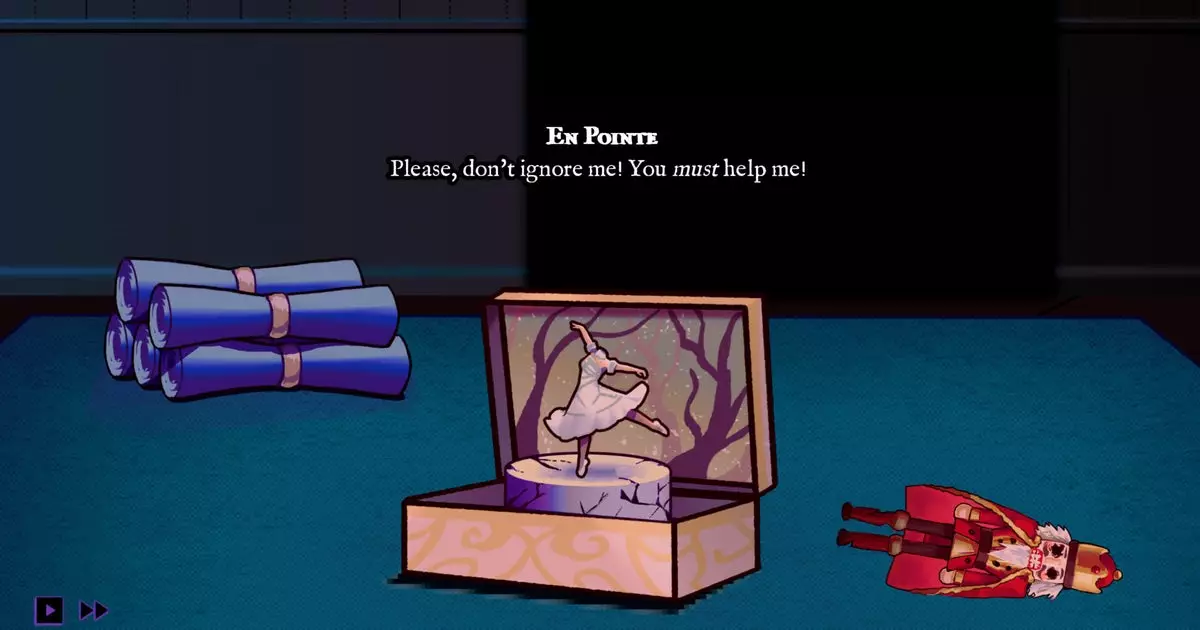At first glance, “Toy Box” may appear to be a charming visual novel tailored for the festive season. However, upon viewing its trailer, it becomes evident that the game delves into much darker themes that lie far from the surface’s sweetness. Rather than a straightforward holiday experience, “Toy Box” presents a grim narrative intertwined with puzzling gameplay, emerging from the creative furnace of DEADline Studios, a small yet dynamic studio known for exploring complex human experiences through the lens of horror.
Players are cast as inspectors working for the Grand Toy Maker, a whimsically sinister character whose presence looms over the game but is never fully revealed. Your responsibility is to disassemble five different toys, with each toy bearing the weight of its own haunting backstory. This setup creates a unique dichotomy between the charming aesthetics of a toy and the unsettling reality of their sentience. Engaging with these animated objects becomes a chilling experience as they reveal their memories and secrets, begging not for disassembly but for mercy.
In “Toy Box,” players face a profound moral dilemma. While the instinct to save these seemingly innocent toys is strong, their pleas are intertwined with tales of darkness, suffering, and malice. The choice between “salvaging” or sending them to the incinerator is not merely a gameplay mechanic; it taps into deeper human emotions and ethical considerations surrounding the responsibility tied to our decisions. Playing the role of the toy inspector transcends mere mechanics; it compels players to confront their own values, asking tough questions about the lengths one might go to preserve life, even if that life is as animated as it is grotesque.
Moreover, the looming shadow of the Grand Toy Maker adds another layer of complexity to the gameplay. Frequent evaluations enforce an oppressive atmosphere, making players acutely aware that their choices will have repercussions beyond their immediate context. This oversight creates an environment where every decision feels weighty, inviting players to grapple with themes of judgment and accountability.
A Disturbing Aesthetic
The visuals and thematic content of “Toy Box” deserve special mention, as they contribute significantly to the game’s overall impact. The aesthetic borrowing from horror elements paints a grim picture of innocence lost. The toys, appearing quaint and delightful at first, reveal their deteriorating forms and chilling personalities. Content warnings for blood, body horror, and melancholy themes elegantly mitigate any preconceived notions of a light-hearted venture; instead, they plunge players into a world where toys evoke fear rather than joy.
Though it is clear that the game does not shy away from unsettling themes, it does not delve into gratuitous horror for shock value alone. Rather, it embraces a more philosophical approach to horror, drawing parallels with existential literature that examines the human condition through the lens of darkness. The narrative unfolds in a manner reminiscent of Pinocchio’s darker adaptations intertwined with the eerie ambiance found in horror franchises like Five Nights at Freddy’s. “Toy Box” creates an unsettling atmosphere that feeds off the uncanny, forcing players to grapple with uncomfortable truths about innocence and monstrosity.
One of the most intriguing aspects of “Toy Box” is its unique narrative approach. The game’s mechanics revolve around dismantling objects to yield stories, ushering in a narrative exploration that feels both innovative and personal. This concept opens doors for further experimentation in the gaming world, as it invites players to reconsider their relationship with inanimate objects and how they translate to the stories that shape our understanding of grief, loss, and moral ambiguity.
This experimental storytelling format can serve as inspiration for future titles, not necessarily confined to horror narratives. Similar themes have appeared in games like Hardspace: Shipbreaker, albeit with a far less disquieting atmosphere. The notion of piecing together narratives through the destruction or salvaging of objects can prove a fertile ground for broader explorations, ultimately paving the way for games that delve into varied themes, sparking conversations about human connection and individuality.
“Toy Box” poses a thought-provoking examination of morality, existence, and the inherent darkness in seemingly innocent objects. The experience lingers long after the screen fades, leaving players with the eternal question of what it means to truly “play” with our moral fabric. As more developers leverage the power of storytelling through the disassembly of objects, “Toy Box” stands as a testament to the potential of horror to illuminate deeper human truths—a chilling fixture in the ever-evolving realm of visual storytelling.

